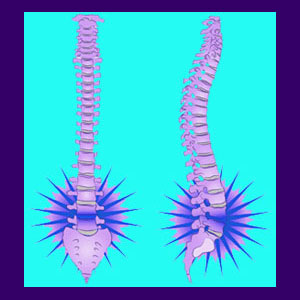
Spinal instability can be the result of an injury, degenerative process or congenital condition. An unstable spine means that the integrity of the spinal column has been compromised. In a structurally-unsound vertebral column, the movement of the spinal bones and discs becomes abnormal. The vertebral bones, discs, muscles and ligaments are no longer held together in a tight and proper fit.
The spine is designed to provide support, structure and protection for the body and its organs. In the case of an unstable spinal column, the structure is no longer capable of providing these necessary attributes.
This discussion focuses on the diversity of instability conditions that can affect the human vertebral column, including their causes and common therapy options.
Causes of Spinal Instability
The following conditions can all cause or contribute towards the occurrence of an unstable spinal column:
Osteoarthritis can wear down the vertebral bones causing an increased range of abnormal motion in each vertebral level.
Osteoporosis can cause vertebral bones to fracture and move from their normal spinal position.
Spondylolisthesis can become so severe as to compromise the structural integrity of the spinal column.
Degenerative disc disease and herniated discs can create the possibility of increased vertebral movement in the affected levels.
Back injury can cause the spine to shift and lose normal alignment.
Certain congenital conditions make the spine prone to abnormal vertebral level movement.
Types of Spinal Instability
Microinstability is a fairly common condition in which small internal movements of the spinal bones are abnormal.
Macroinstability is when an entire spinal level is moved into an abnormal position in relation to other vertebrae. Multiple levels of macroinstability can be a dangerous condition that often requires drastic back surgery.
Effects of Instability
Nerve compression is possible and may become severe. Sciatica symptoms are commonly generated from unstable lumbar spinal levels.
Visual deformity is possible with severe cases of macroinstability.
Abnormal movement can cause muscle spasms that can be extremely painful. Ironically, these muscle spasms often temporarily stabilize the spine, making a proper diagnosis difficult to achieve.
Severe instability can even cause vertebral fracture.
Treatment of Instability
Conservative treatments range from no treatment to pain management drugs to physical therapy. Minor microinstability is often not symptomatic and may even resolve itself with time.
Serious cases of instability might require surgical correction and stabilization. This surgery can be minor or very invasive, depending on the extent of the damage to spinal integrity. Typically for severe cases, spinal fusion using reinforcing hardware is the rule. This is a highly invasive and risky operative technique.
Spinal Instability is Serious
Instability is not an uncommon condition in its most mild forms. As we age, it is normal for our spinal joints to become loose. It is normal for us to lose some amount of integrity in our spines from completely normal processes, such as degenerative disc disease and spinal arthritis. Usually mild asymptomatic cases of instability are nothing to worry about.
Congenital instability, or problems arising due to a spinal injury, must usually be treated surgically.
Physical therapy can be a great help in learning how to move properly and build-up surrounding spinal muscles to prevent pain and vertebral slippage.





